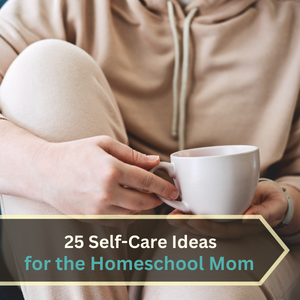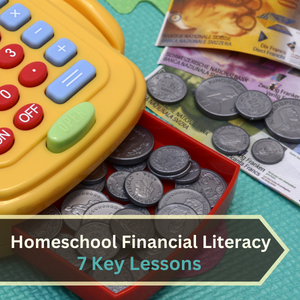As we pave new paths in homeschool education, the importance of incorporating essential life skills into our curriculum cannot be overstated. Cooking is one such skill that stands out as a daily necessity and a vibrant teaching tool. For our young learners at Happy Pages Homeschool, the kitchen becomes an interactive classroom where measurements become math lessons, and recipes turn into science experiments. Cooking kits for kids are particularly beneficial in this regard, offering structured culinary experiences that are both educational and enjoyable.
The integration of cooking kits for kids into a homeschooling curriculum offers numerous benefits. These kits are designed to nurture an early appreciation for healthy eating, foster independence, and build confidence. Additionally, they create an avenue for family bonding, where every recipe prepared is a memory baked, stirred, or sautéed into the hearts of our children.
Understanding the impact of these cooking kits on kids, we delve into how they can enhance our children’s learning journey and bring our families together in the most delicious way possible.
Top 5 Homeschool Cooking Kits for Kids
With the criteria set, let’s explore the cooking kits that stand out in 2023. These kits have been chosen for their quality content and their ability to connect with the core values of Happy Pages Homeschool.
Baketivity
Baketivity stands out as a beacon for young learners, combining the simplicity of baking with the complexity of education. It’s not just about the delicious end product; it’s a hands-on experience that weaves in educational threads across various subjects.
Benefits of Baketivity
- Educational Integration: Each Baketivity kit comes with lesson plans that naturally integrate academic concepts such as math, science, and reading. For example, measuring ingredients teaches fractions, and the chemical reactions during baking introduce basic chemistry.
- Ease of Use: The kits include pre-measured ingredients, which means less prep and cleanup for busy parents. This ease of use encourages regular use, ensuring that learning through baking becomes a consistent part of the homeschooling routine.
- Safety Lessons: Knife safety is crucial for young children, and Baketivity kits address this with age-appropriate tools and lessons, empowering even the youngest chefs to participate actively and safely.
- Skill Development: Following step-by-step instructions promotes independence and enhances fine motor skills. Children also learn patience and time management as they wait for their baked goods to rise and cook.
Pros
- Complete Kits: Baketivity kits are all-inclusive, providing all necessary non-perishable ingredients, simplifying the process for parents, and keeping children’s focus on the activity.
- Allergen Considerations: Options for allergen-friendly kits make Baketivity inclusive, catering to families with specific dietary needs and ensuring no child is left out of the fun.
- Engaging and Educational: The colorful and well-designed materials are child-friendly, making learning engaging and keeping children interested in baking and educational activities.
Cons
- Recurring Cost: While the kits provide convenience, the cost can add up over time, especially for families on a tight budget who might find purchasing individual ingredients more economical.
- Limited Variety: Some families might find the recipes and activities become repetitive after several months, which could lead to a decline in interest.
- Waste Concerns: Pre-measured ingredients can lead to excess packaging waste, which might not align with the environmental values of some families.
Baketivity kits are a fantastic way to introduce young children to the joys of baking while embedding valuable educational lessons within each recipe. While there are considerations to keep in mind regarding cost and variety, the hands-on learning and skill development offered by these kits make them a worthwhile investment in your child’s homeschooling journey.
4 Runner up Cooking Kits for kids
Little GF Chefs
Best For: Allergen-friendly cooking and baking experiences
Little GF Chefs crafts a unique niche in the cooking kit market by offering gluten-free and allergy-safe recipes, ensuring that children with dietary restrictions can still enjoy the full cooking and baking experience.
Pros:
- Inclusivity: This kit allows children with gluten sensitivities or other allergies to participate without worry, promoting a sense of normalcy and inclusion.
- Educational Content: Kids not only learn how to cook but also gain an understanding of dietary needs and ingredient substitutions, which can be vital knowledge for those with food allergies.
Cons:
- Niche Focus: The specialized nature of the kits means they may not appeal to families without these dietary restrictions, potentially limiting their audience.
- Price Point: Given the cost of gluten-free and allergy-friendly ingredients, these kits can come at a higher price compared to standard cooking kits.
Eat2explore
Best For: Cultural exploration and diverse culinary experiences
Eat2explore stands out for its global perspective, offering dishes from various countries and cultures, which can broaden children’s palates and introduce them to the world’s diversity through cuisine.
Pros:
- Cultural Education: Each box is an opportunity to explore a new country’s culinary and cultural practices, making dinner an educational event.
- Skill Building: Designed for a wider age range, these kits can help develop more advanced cooking skills and techniques.
Cons:
- Complexity: Some recipes might be too challenging for younger children, requiring more hands-on guidance from parents.
- Flavor Adventurousness: Picky eaters may be hesitant to try foods from different cultures, which could limit the kit’s appeal to some families.
Raddish Kids
Best For: Comprehensive educational value and cross-curricular learning
Raddish Kids offers a monthly cooking club for kids that integrates cooking with STEM, history, and geography, making it an ideal complement to any homeschool curriculum.
Pros:
- Curriculum Integration: The kits often include additional educational materials that tie cooking into other areas of learning.
- Age Range: Activities are designed to engage a wide range of ages, making it suitable for families with multiple children.
Cons:
- No Ingredients Included: Families must purchase all of the ingredients separately, which adds an extra step to the process.
- Subscription Model: A subscription service involves a commitment involved, and it may not be as flexible for families who don’t want a monthly kit.
Harlow’s Harvest
Best For: Practical life skills and STEM integration
Harlow’s Harvest focuses on teaching kids about where food comes from, nutrition, budgeting, and incorporating STEM principles into cooking, catering to children who are ready to take a more hands-on approach in the kitchen.
Pros:
- Life Skills Focus: Emphasizes practical skills like budgeting and nutrition that are useful beyond the kitchen.
- STEM Integration: Incorporates science, technology, engineering, and math concepts naturally into cooking projects.
Cons:
- Requires Commitment: The kits are designed to be used consistently to get the full educational benefit, which may not work for all scheduling or teaching styles.
- Age Specific: The content may be too advanced for younger children, making it less suitable for those not in the targeted age bracket (typically tweens).
Each of these cooking kits for kids offers unique benefits and challenges, and the best choice depends on a family’s specific needs, interests, and the educational goals they have for their children.
Criteria for Selecting Homeschool Cooking Kits
Choosing the right cooking kits for kids requires a thoughtful approach. Here are the criteria that should guide every homeschooling family’s selection:
Educational Value and Curriculum Integration
A quality cooking kit should be more than just a collection of ingredients. It must offer an enriching educational experience that aligns with your child’s learning objectives. Look for kits that include educational themes, integrate subjects like math and science, and stimulate a child’s cognitive development through hands-on activities.
Age-Appropriateness and Skill Level Consideration
The best cooking kits for kids are those that match your child’s age and skill level. Kits that offer simple tasks can instill a sense of achievement in younger children, while more complex kits can challenge older kids and help refine their culinary skills.
Allergen Awareness and Dietary Inclusivity
In a world where dietary restrictions are increasingly common, cooking kits for kids must cater to various needs. Homeschooling allows us to embrace inclusivity fully, and selecting allergen-friendly kits ensures every child can participate in the joy of cooking.
Engagement and Fun Factor for Sustained Interest
Let’s face it, learning is most effective when it’s fun! Cooking kits for kids should be colorful, engaging, and filled with elements that keep young learners excited about every lesson they cook up.
Conclusion
Throughout our exploration of cooking kits for kids, we’ve seen how they can be a vital component of a homeschooling curriculum. They’re not just a means to an end to a home-cooked meal but a journey through which children learn valuable skills, from mathematics to science to cultural awareness.
Expert Opinion: The Role of Cooking in Child Development
Experts agree that cooking from a young age can significantly impact child development. It teaches responsibility, improves fine motor skills, and enhances understanding of cause and effect. These cooking kits for kids serve as tools to inculcate these life skills in a structured yet fun-filled way.
Call to Action
Now that we’ve stirred your curiosity and appetite for knowledge, it’s time to choose the perfect cooking kit for your homeschool environment. Assess your children’s interests, dietary needs, and educational goals, and pick a kit that aligns with your homeschooling philosophy. Embrace the opportunity to teach life skills, create lasting memories, and maybe, just maybe, ignite a lifelong passion for cooking in your children.
Remember, every moment is a teaching opportunity, and with these cooking kits for kids, each meal is a lesson they’ll savor for a lifetime.








